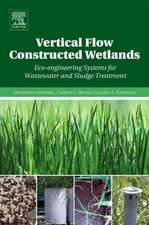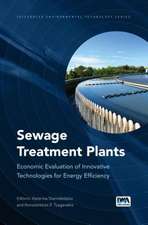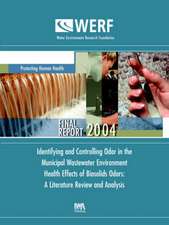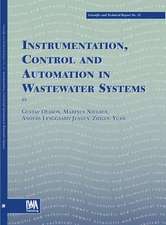Sludge
Editat de Richard E. Bailyen Limba Engleză Hardback – 23 mar 2010
Preț: 965.33 lei
Preț vechi: 1318.17 lei
-27% Nou
Puncte Express: 1448
Preț estimativ în valută:
184.77€ • 200.77$ • 155.31£
184.77€ • 200.77$ • 155.31£
Carte disponibilă
Livrare economică 31 martie-14 aprilie
Preluare comenzi: 021 569.72.76
Specificații
ISBN-13: 9781607418429
ISBN-10: 1607418428
Pagini: 317
Ilustrații: b/w photos, tables & charts
Dimensiuni: 188 x 262 x 23 mm
Greutate: 0.76 kg
Ediția:New.
Editura: Nova Science Publishers Inc
Locul publicării:United States
ISBN-10: 1607418428
Pagini: 317
Ilustrații: b/w photos, tables & charts
Dimensiuni: 188 x 262 x 23 mm
Greutate: 0.76 kg
Ediția:New.
Editura: Nova Science Publishers Inc
Locul publicării:United States
Cuprins
Preface; Synthetic Sludge as a Physical and Chemical Analogue of Real Sludge in the Activated Sludge Process; Processes to Recovery Profitable Products from Water Degumming Sludge of Vegetable Oils; A Survey of Methods for Characterization of Sulfate-reducing Microorganisms; Nitrogen and Excess Sludge Management; Sewage Sludge Treatment in the European Union; Evaluation of In-situ Sludge Reduction Technologies for Wastewater Treatment Plants; Feasibility of Using a Mixture of Sewage Sludge and Incinerated Sewage Sludge as a Soil Amendment; Potential of Sludge Treatment; A Culture-Independent Novel Approach to the Monitoring of the Activity and Stability of Activated Sludge in Wastewater Treatment; Using ANFIS to Predict the Softening, Melting and Pouring Points of Sewage Sludge Ash During Formation of Slag; Sewage Sludge Treatment and Recycling Systems in Japan: Trends, Challenges and Future Perspectives; Index.

























